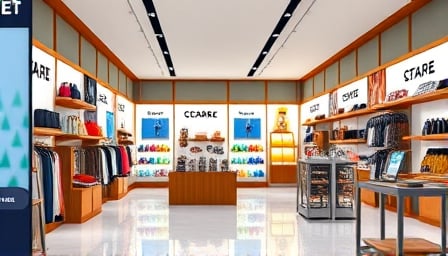Corporate Landscape: Strategic Insights into Hospitality and Retail Dynamics
Accor SA’s recent market performance—closing at 40.85 EUR, well below its 52‑week high of 51.10 EUR and above its low of 34.62 EUR—provides a microcosm of the broader turbulence affecting the global consumer‑goods sector. While the company itself has not released new operational data in the immediate past, its fluctuating share price can be interpreted through several macro‑level trends that are reshaping hospitality, retail, and loyalty ecosystems.
1. Omnichannel Innovation in the Hospitality Sphere
Accor’s decision to incentivize its ALL loyalty members with 100 free points for activating WhatsApp communication underscores a strategic pivot toward integrated, real‑time customer engagement. The hospitality industry is witnessing a rapid convergence of digital touchpoints:
| Segment | Key Initiative | Expected Outcome |
|---|---|---|
| Loyalty Programs | Integration of instant messaging (WhatsApp, WeChat) | Higher member activation, reduced churn |
| Service Delivery | AI‑driven concierge via chat | Personalisation, operational efficiency |
| Revenue Management | Dynamic pricing linked to real‑time demand signals | Optimised occupancy and yield |
Across the consumer‑goods spectrum, brands that have embedded messaging platforms into their loyalty frameworks have reported up to a 15 % lift in repeat engagement. Accor’s move aligns with this trend, positioning the group to capture the growing segment of digitally‑savvy travelers who expect seamless communication across devices.
2. Retail Innovation: Amazon’s Fresh Store Refocus
Amazon’s announcement to close 19 UK Fresh stores—while converting select locations to the Whole Foods brand—signals a strategic re‑allocation toward high‑margin, premium grocery experiences. This shift is informed by:
- Consumer Behaviour: Post‑pandemic consumers increasingly value curated, high‑quality food selections, as evidenced by a 12 % year‑over‑year growth in premium grocery spend in the UK.
- Competitive Pressure: Traditional supermarkets are investing heavily in online grocery, squeezing margins. By pivoting to Whole Foods, Amazon leverages its strong brand equity in the upscale segment.
- Supply Chain Optimization: Consolidating Fresh operations into Whole Foods enables tighter control over sourcing, waste reduction, and fresher product cycles.
The closure of Fresh outlets, therefore, is not an isolated cutback but part of a larger strategy to align physical footprints with differentiated brand propositions and supply‑chain efficiencies.
3. Cross‑Sector Patterns: From Hospitality to Grocery
Both Accor and Amazon illustrate a cross‑industry convergence on three core pillars:
| Pillar | Hospitality | Grocery |
|---|---|---|
| Omnichannel Presence | WhatsApp‑enabled loyalty | Whole Foods‑online sync |
| Consumer‑Centric Personalisation | Point‑based incentives | Premium, curated selections |
| Supply‑Chain Agility | Flexible room inventory allocation | Integrated sourcing and distribution hubs |
These patterns indicate that long‑term resilience in consumer goods sectors hinges on the ability to fluidly blend digital engagement with high‑quality physical experiences. Companies that can orchestrate such synergy will likely outperform those that cling to legacy models.
4. Market Dynamics and Short‑Term Movements
In the immediate term, Accor’s share price volatility may reflect short‑term market sentiment driven by macroeconomic factors—interest‑rate hikes, inflationary pressures, and shifting travel demand. Nevertheless, the underlying fundamentals—particularly the rollout of omnichannel loyalty tools—suggest a potential stabilising effect as customer lifetime value is enhanced.
Similarly, Amazon’s Fresh store closures may trigger a temporary dip in its retail revenue metrics. However, the conversion to Whole Foods is projected to yield higher gross margins and support Amazon’s broader strategy to dominate the premium grocery niche, thereby offsetting short‑term revenue contraction.
5. Long‑Term Industry Transformation
The trajectory observed in these corporate actions points toward a future where:
- Digital and Physical Boundaries Blur: Loyalty programs that span messaging apps, mobile wallets, and in‑store experiences become the norm.
- Premiumisation Drives Growth: Brands are increasingly targeting niche, high‑margin segments rather than broad, price‑sensitive markets.
- Supply Chain Resilience Is Paramount: Flexible, technology‑enabled logistics are essential to respond quickly to shifting consumer preferences.
Corporate leaders who adopt a holistic, consumer‑centric strategy—integrating data analytics, omnichannel engagement, and agile supply chains—will be best positioned to capture sustainable value in an era defined by rapid change and heightened customer expectations.
